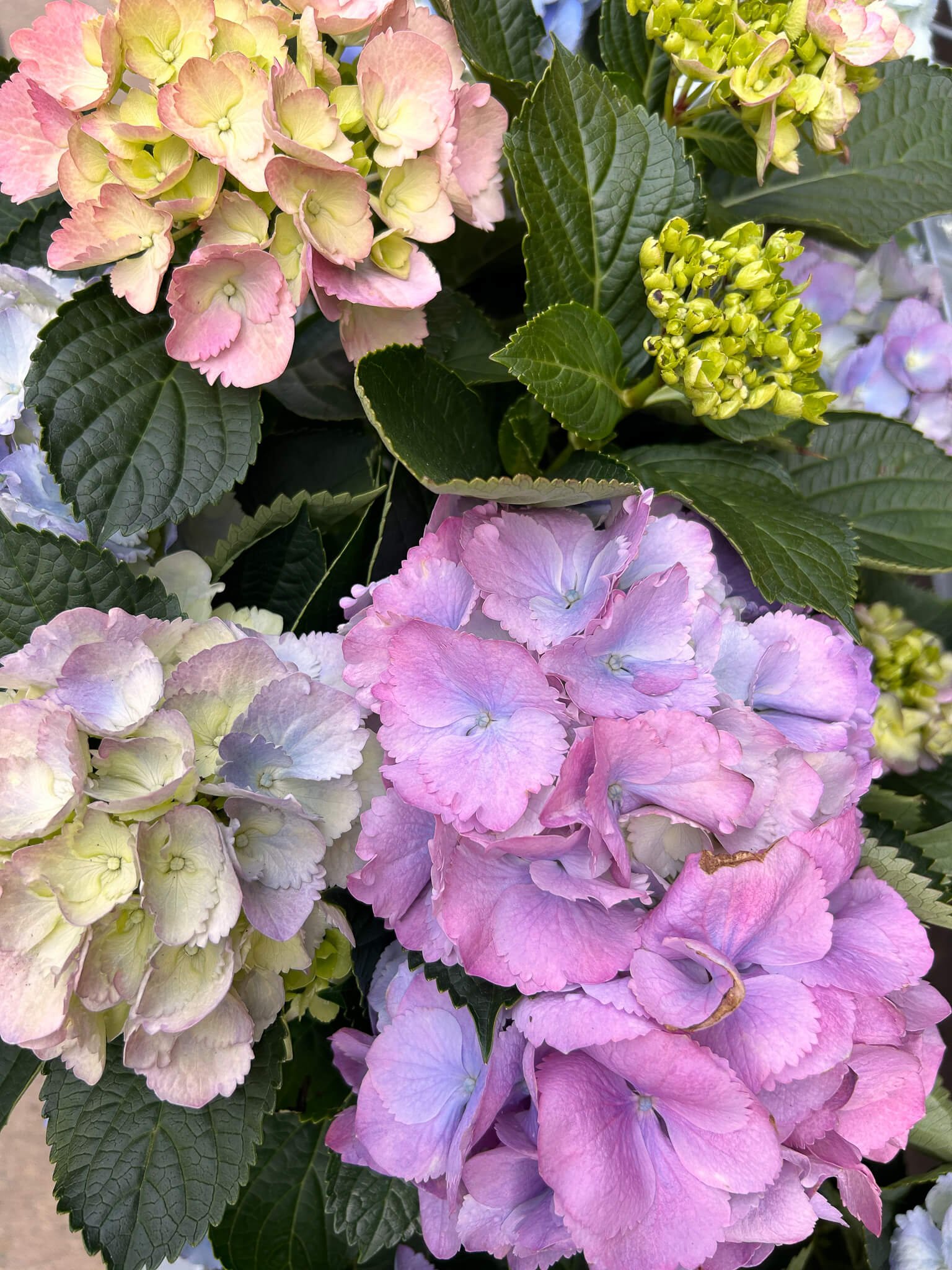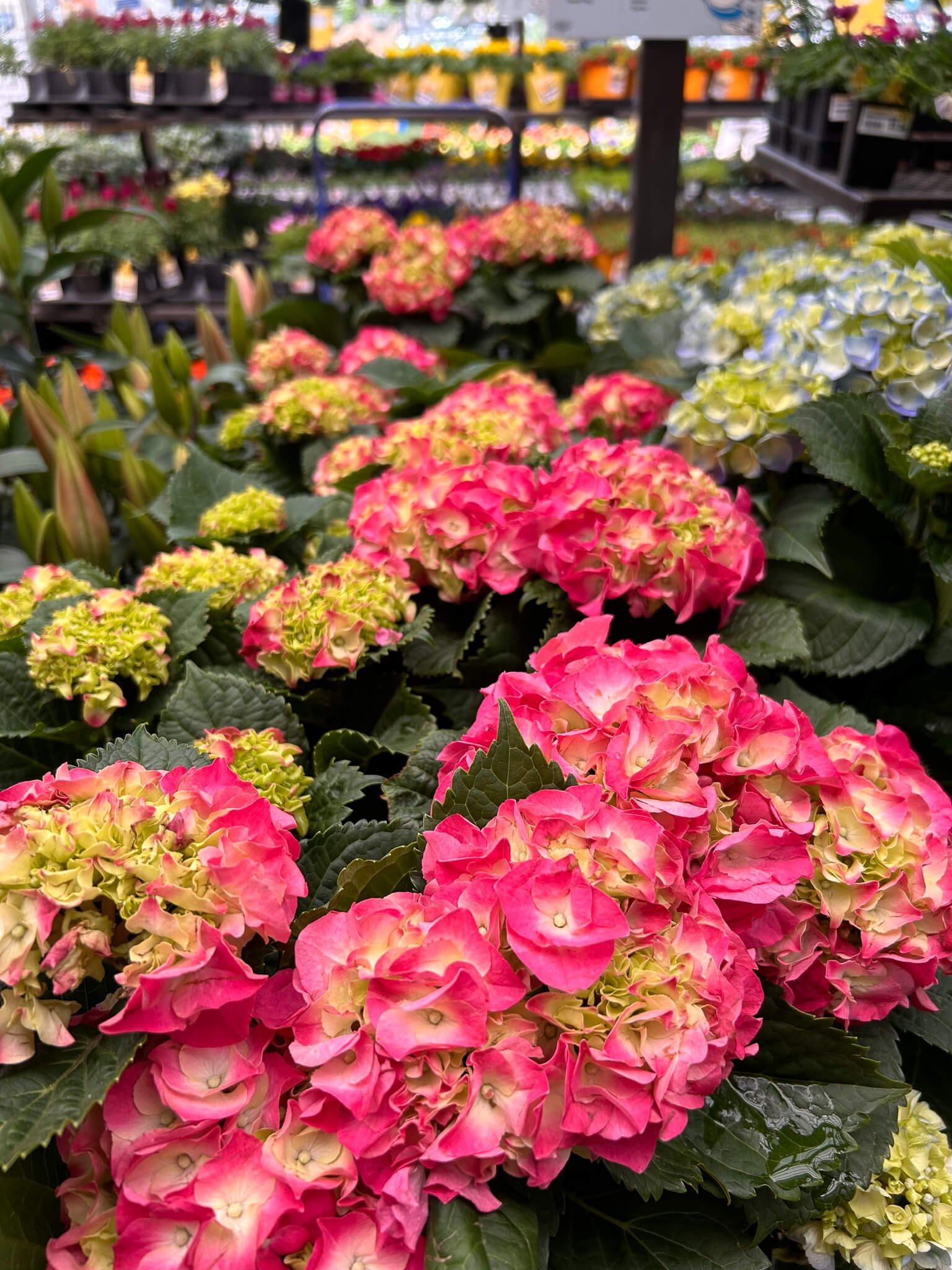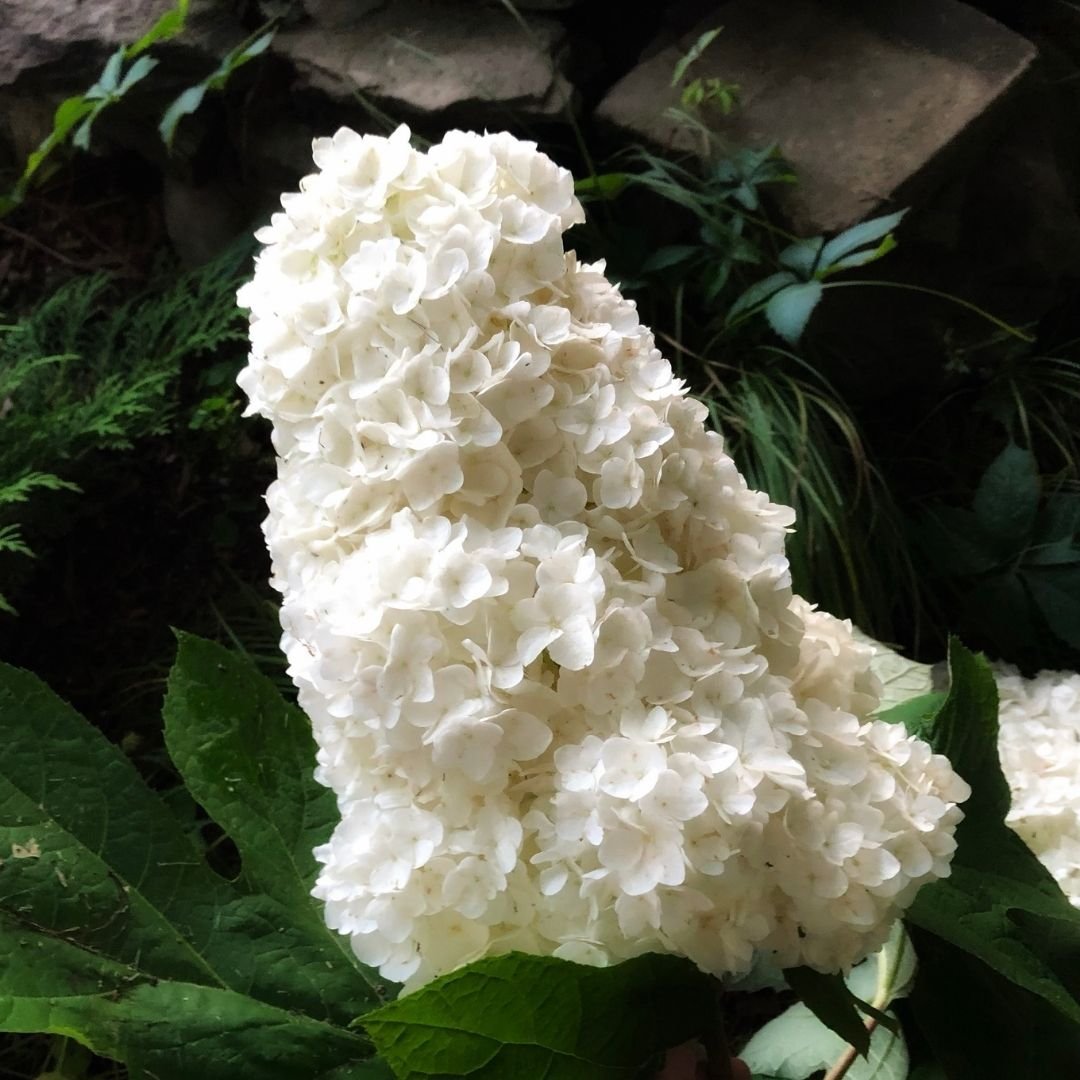The Sun-Loving Limelight Panicle Hydrangea
This Tough Hydrangea Laughs at Heat, Humidity, and Harsh Sun
The popular Limelight hydrangea (Hydrangea paniculata ‘Limelight’) is an upright, multi-stemmed flowering shrub belonging to the Hydrangeaceae family.
Limelight is a variety of panicle hydrangea, and has dense cone-shaped flowers that emerge a light chartreuse green color in midsummer, quickly changing to a creamy white. As colder autumn weather approaches, flower color changes again to deep, rich pink color. Unlike bigleaf hydrangeas, flower color is not affected by the pH of the soil.
The Limelight hydrangea is very large, maturing to a generous 6 to 8 feet tall and wide. Be sure to give it plenty of space! Its impressive size makes it a showstopper in larger landscapes, but it will overwhelm smaller yards or tight garden beds.
If you have a small yard, consider planting a shorter, more compact panicle hydrangea like Little Lime® or Little Quick Fire®.
Limelight hydrangeas are adaptable plants and can tolerate a wide range of growing conditions and soil types. They can handle more direct sunlight and heat than other hydrangea types.
Grow Limelight full sun to part shade and rich, organic, well-draining soil in zones 3-9a. Don’t know your zone? Check out the USDA’s map here.
Limelight hydrangeas bloom on new wood and benefit from an annual pruning in late winter or early spring to promote flowering and encourage full, lush growth.
Keep scrolling for more information about growing this sun-loving hydrangea, including planting companion ideas.
Limelight hydrangeas grow very tall and wide - give them space!
How to Grow Limelight Hydrangea
Planting: The best time of year to plant a Limelight hydrangea is in the spring or fall, giving the roots time to establish before the onset of extreme hot or cold weather. Water deeply immediately after planting.
Location: Choose a location with rich, well-draining soil. Panicle hydrangeas prefer soil that retains moisture but does not become waterlogged. Select a spot with full sun to part shade (4+ hours of direct sun per day). A little afternoon shade is ideal.
Soil: Amend the soil with organic matter, such as compost, shredded leaves, or Leaf-gro® to improve drainage and soil fertility. Flower color is not affected by the pH of soil.
Mulch: Apply a layer of organic mulch around the base of the plant to retain soil moisture, regulate temperature, and suppress weeds. Make sure the mulch does not touch the base of the plant.
Watering: Keep the soil consistently moist but not waterlogged, especially during periods of drought. Deep watering is preferable to encourage the development of a strong root system (Are you in a drought? Check the U.S. Drought Monitor).
Fertilization: Hydrangeas typically do not need fertilization when they are given the rich, fertile soil they prefer. Each spring, spread a layer of compost, shredded leaves or Leaf-gro® around the soil underneath your hydrangea, being careful to keep away from the base of the shrub.
Pruning: Limelight hydrangeas bloom on new wood. They should be cut back by one-third every year, in late winter or early spring, to promote flowering. Do not prune late into spring or you risk cutting off flower buds and reducing the flowering potential for the current year.
Pest and Diseases: Diseases such as powdery mildew and fungal leaf spots can be occasional problems, as can aphids and mites. Ensure good air circulation around your plants to minimize the risk of disease, and practice good watering habits (see “How to Water your Plants” to brush up on your watering skills).
Does Limelight Hydrangea Bloom on Old or New Wood?
The Limelight panicle hydrangea blooms on new wood. When a plant blooms on new wood, flowers develop on the current season's growth rather than on the previous year's growth.
In practical terms, this means that the plant can produce flowers even if it experiences winter dieback or it is pruned in late winter or early spring before growth starts again.
This large, upright, loosely-branched hydrangea looks best when it has an annual pruning to promote flowering and lush, full growth.
Prune it back by approximately one-third to one-half in late winter or early spring before new growth begins.
This timing will allow you to lightly shape the plant and remove last year’s dried flower heads and damaged branches, without sacrificing any flowers.
Limelight hydrangea flowers emerge green and quickly turn white.
Garden Ideas for Limelight Hydrangea
Mass Plantings: Create impact by planting a large grouping of Limelight hydrangeas together in a mass planting. This approach works well in larger spaces, where the abundant summer blooms and large sprawling habit creates a stunning visual display.
Side Yard Plantings: Use Limelight hydrangea in a large side yard, to delineate property lines or soften the look of privacy fencing.
Mixed Borders: Plant Limelight hydrangeas along with other flowering shrubs, small trees, perennials, and ornamental grasses to create a dynamic mixed border.
Hedge or Screen: Plant multiple Limelight hydrangeas in a row to create a sprawling hedge or screen, keeping in mind these shrubs are deciduous and will have no leaves in fall and winter.
Specimen Planting: Showcase a single Limelight hydrangea as a focal point in the garden. Choose a prominent location where the beautiful blooms can be appreciated and be sure to allow plenty of space for its mature size.
Limelight Hydrangea Planting Companion Ideas
Lemon-Lime Nandina (Nandina domestica ‘Lemon-Kime’)
Compact Japanese Holly (Ilex crenata ‘Compacta’)
Daub’s Frosted Juniper (Juniperus chinensis ‘Daub’s Frosted’)
Nelly Stevens Holly (Ilex x ‘Nellie R. Stevens’)
Sprinter® Boxwood (Buxus microphylla 'Bulthouse')
Mucho Gusto® Abelia (Abelia × grandiflora 'Muabd')
Otto Luykens Cherry Laurel (Prunus laurocerasus ‘Otto Luykens’)
Anna’s Magic Ball® Arborvitae (Thuja occidentalis 'Anna van Vloten')
Dwarf Japanese Cedar (Cryptomeria japonica ‘Globosa Nana’)
Emerald Green Arborvitae (Thuja occidentalis 'Emerald Green')
NewGen Independence® Boxwood (Buxus NewGen Independence® ‘SB 108’)
Golden Variegated Japanese Forest Grass (Hakonechloa macra ‘Aureola’)
Why isn’t My Limelight Hydrangea Blooming?
Several factors can contribute to a Limelight panicle hydrangea not blooming:
Young plant: Panicle hydrangeas may take a few years to establish before they start blooming. If your plant is still relatively young, it might just need more time to mature and establish itself - be patient!
Pruning: Pruning at the wrong time or too aggressively can remove the flower buds. Panicle hydrangeas bloom on new wood, so pruning in late winter or early spring before new growth begins is ideal.
Insufficient sunlight: For best flowering, a Limelight hydrangea needs at least 4 hours of direct sunlight per day. Without enough sunlight, it may produce fewer blooms or fail to bloom altogether.
Watering issues: Inconsistent or inadequate watering can stress the plant and affect flowering. Ensure your Limelight hydrangea receives sufficient water, especially during hot and dry periods.
Deer: Deer like the taste of panicle hydrangeas, particularly the flowers and buds. They may visit your yard and nibble the buds off your panicle hydrangea, leaving no evidence of their presence other than the absence of flowers.
Are Limelight Hydrangeas Poisonous to Dogs?
Panicle hydrangeas (Hydrangea paniculata), including the Limelight cultivar, contain compounds that can be toxic to dogs if ingested, specifically cyanogenic glycosides.
These compounds can release cyanide when broken down in the digestive system. However, the level of toxins in panicle hydrangeas are relatively low, and instances of dogs getting poisoned by consuming these plants are rare.
While the risk of severe poisoning is low, it’s important to monitor your dog's behavior in outdoor spaces. If you suspect your dog has ingested a toxic plant, seek immediate veterinary care or contact the Pet Poison Hotline.
Read “Which Plants are Toxic to Dogs” for more information on poisonous plants.

























Bring drama to your garden with dark foliage and mophead blooms!